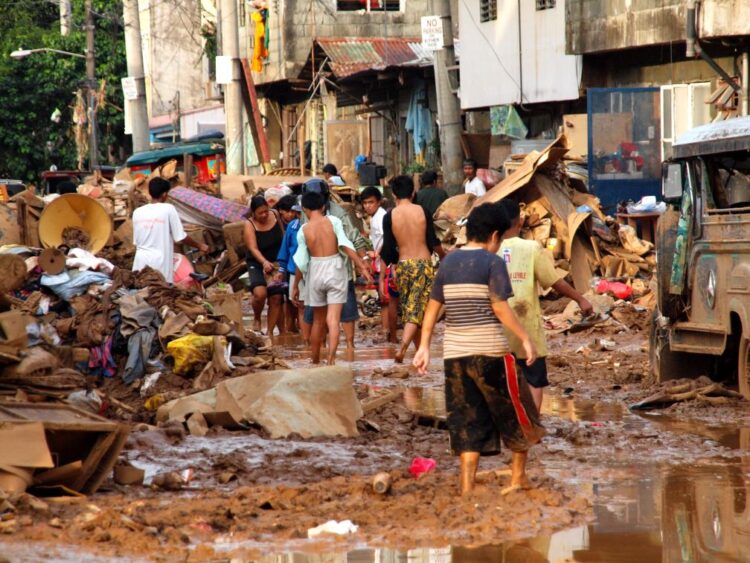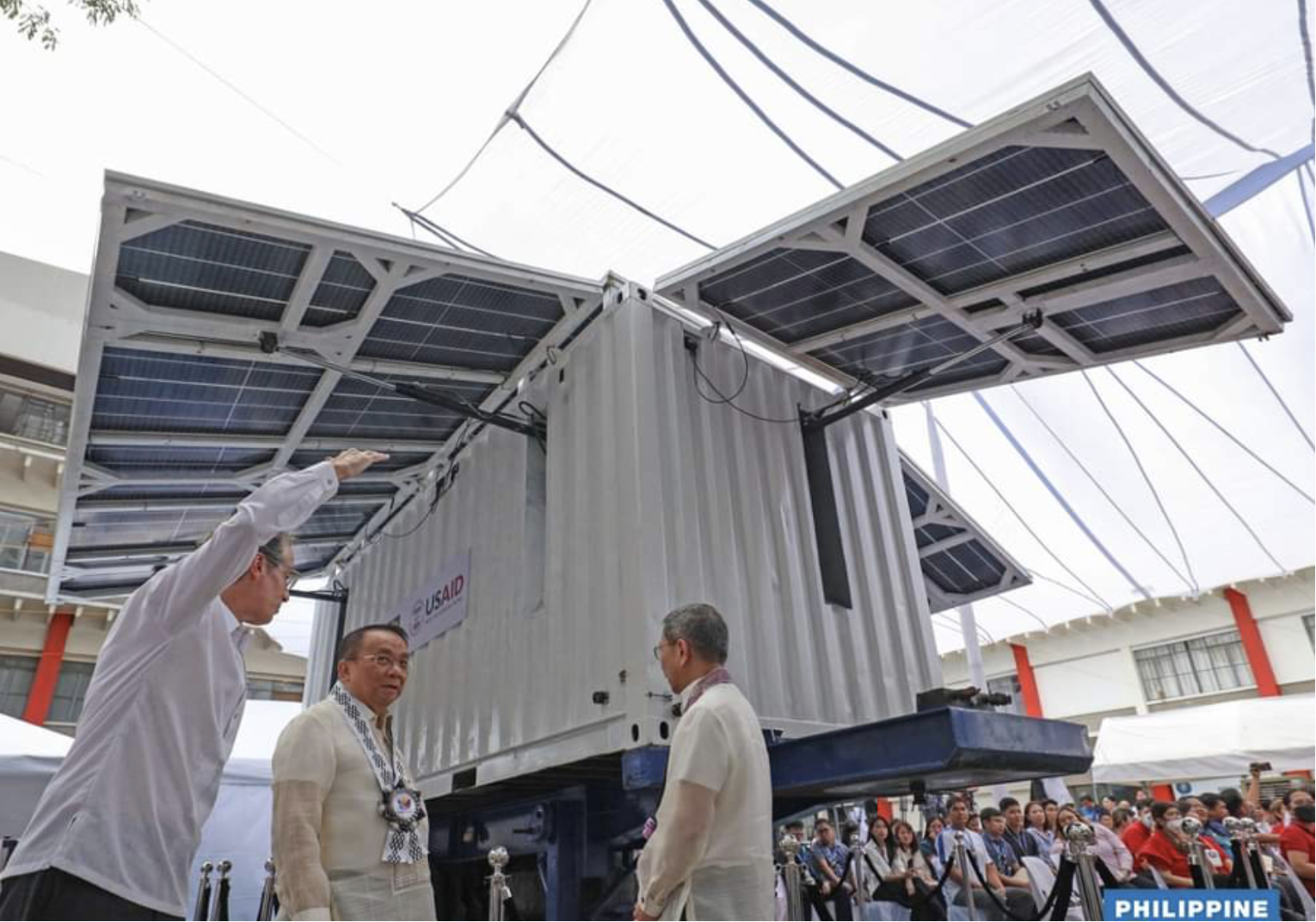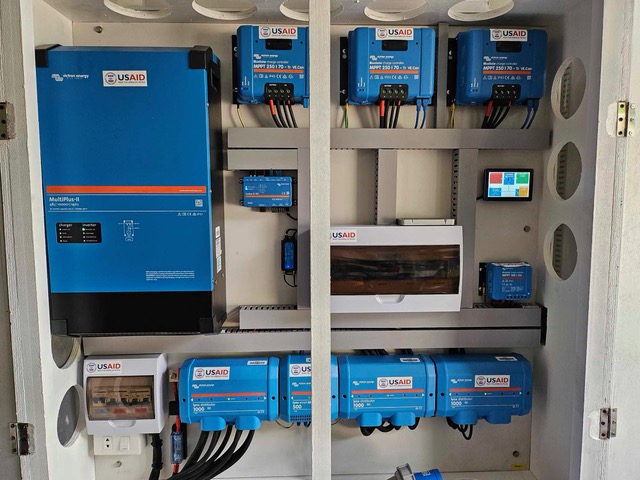
The geographic location of the Republic of the Philippines‘ seven thousand islands make them vulnerable to natural disasters.
The archipelago lies in an area of seismic activity, experiencing an average of 20 typhoons per year, and they count 23 active volcanoes among their islands.
Catastrophic incidents result in loss of life and in the period of vulnerability which follows – no power, water, food or shelter – an inability to respond will take a further toll.
Disruption to the electricity grid hinders any relief effort because communication systems are down, there’s no lighting at night, no pumped drinking water; and medical equipment lying idle which could be used to treat those in need.
An immediate solution to reliable autonomous power is available in the form of containerised power systems with battery stored energy, which can be recharged from solar panels. They require no set up; can be left unattended, and there’s no requirement for fuel supply or engineering support. From the moment they arrive on site they can deliver 24 hour power.
Because of the frequency of natural disasters experienced in the Philippines the United States Agency for International Development USAID has funded four such containerised power systems to be kept permanently on standby until needed for disaster relief.
The containerised off-grid solar systems which include lithium battery storage have been designed and built by off-grid specialist Semper Green Energy Inc.
Patrick de Backere, CEO of Semper Green Energy Inc.”We are very pleased that USAID has chosen us and our expertise for this important work in building these containerised power supplies for disaster relief.”
There is no doubt that the units funded by USAID – which has been investing in regional development for sixty years – will save lives.
The disaster relief power systems are built using the following devices:
- 17 x 540W solar panels offer 9.18kWp The panels are installed on hydraulic mounts which allow them to be deployed straight from compact stowage to optimal solar gain at the best angle to the sun.
- A MultiPlus-II 48/10000/140-100 230V Inverter/Charger provides 10kVA of AC power from the battery storage. When a generator is available the MultiPlus can recharge the battery bank with up to 140A of charging current.
- 3 x BlueSolar MPPT 250V/70A-Tr VE CAN. Maximum Power Point Tracking (MPPT) chargers optimise the solar energy harvest for storage into the battery bank.
- 10 x Lithium Battery Smart 25.6V/200Ah Smart. Connected in series and in parallel the batteries offer 51.2 kWh storage capacity within the system’s 48V topography. Bluetooth communication allows in-depth cell voltage and battery temperature data to be transmitted to the system’s communication centre, or to a smart phone using the VictronConnect app.

- Battery management is provided by a Lynx Smart BMS 500 with DC power distribution handled by the Lynx Distribution units which offer safe easy busbar termination with monitored fuses.
- The communication centre device mentioned earlier is a Cerbo-S GX which harmonises the whole system and provides real-time data and engineering access either on site via the installed GX Touch 50 – touch screen user interface – or it will provide remote access and monitoring via the free-to-use Victron Remote Management VRM platform. More information about local and remote system management can be found here.
- To allow the Cerbo GX to provide data over the internet, a data communication device is used: The GX LTE 4G-SA cellular modem can operate on 2G/3G and 4G networks and optional antennas are available which are optimised for 2/3G or the 4G network. It includes a built-in GPS receiver. When the optional Active GPS antenna is installed, the system can be tracked as well as Geo-fenced on the VRM Portal.
Containerised systems are flexible, of course, and other configurations are possible according to need. Built using reliable devices they can operate in harsh environments, deployed rapidly and managed remotely.
Following the loss of agriculture, the natural habitat, damage to essential utilities and to the built environment the availability of power allows survivors not just the ability to secure themselves in the short term, but it also allows them to recover normal social and economic life as quickly as possible.
USAID’s work advances U.S. national security and economic prosperity, demonstrates American generosity, and promotes a path to recipient self-reliance and resilience.
This collaboration between USAID and Semper Green Energy Inc provides a strategic preparedness – mitigating the natural disasters which will inevitably come.
The headline image which has not been altered is the property of SuSanA Secretariat: https://www.flickr.com/photos/gtzecosan/















 #victronenergy #adventure
#victronenergy #adventure
 ELECTRICS
ELECTRICS 
